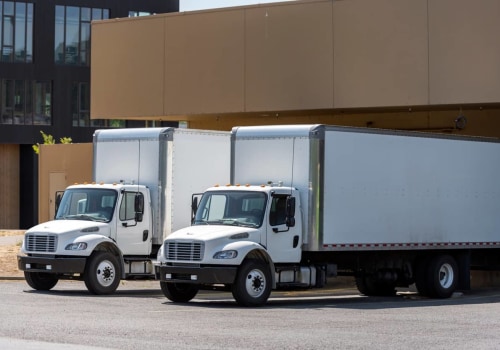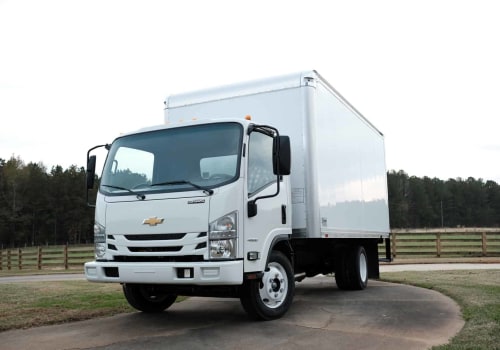Understanding the fuel consumption of a 16-foot truck is crucial for anyone planning to rent or operate such a vehicle, particularly during long-distance moves or commercial deliveries. These medium-sized trucks are commonly used for transporting furniture, household goods, and other bulky items, making them a popular choice for both individuals and businesses. However, the cost of fuel can significantly impact the overall expense of using a 16-foot truck, so it’s important to have a clear idea of how much gas these vehicles typically use. In this guide, we’ll explore the factors that influence fuel consumption in a 16-foot truck, provide an estimate of the average miles per gallon (MPG), and offer tips on how to optimize fuel efficiency during your journey.
Factors Influencing Fuel Consumption
The amount of gas a 16-foot truck uses can vary widely depending on several factors. One of the primary factors is the type of engine the truck is equipped with. Most 16-foot trucks are powered by either gasoline or diesel engines, each of which has different fuel efficiency characteristics. Generally, diesel engines are more fuel-efficient than gasoline engines, offering better MPG, especially over long distances. Another important factor is the weight of the load being carried. A fully loaded truck will consume more fuel than one that is empty or lightly loaded because the engine has to work harder to move the extra weight. Additionally, the terrain and driving conditions play a significant role in fuel consumption. Driving on highways at a steady speed typically results in better fuel efficiency compared to city driving, which involves frequent stops and starts. Finally, the driving habits of the person behind the wheel can also impact how much gas the truck uses. Aggressive driving, such as rapid acceleration and braking, can significantly decrease fuel efficiency.
Average Miles Per Gallon (MPG)
On average, a 16-foot truck typically achieves between 6 to 10 miles per gallon (MPG). However, this can vary depending on the factors mentioned above. For example, a well-maintained truck driving on a highway with a light load might achieve closer to 10 MPG, while the same truck, fully loaded and driven in city traffic, might only achieve around 6 MPG. It's also important to consider the size of the gas tank when planning your trip. Most 16-foot trucks have a fuel tank capacity of around 33 to 40 gallons. This means that on a full tank, you can expect to travel between 200 to 400 miles before needing to refuel, depending on the actual MPG you achieve during your trip.
Fuel Costs and Budgeting
Understanding the fuel consumption of a 16-foot truck is essential for budgeting purposes, especially if you’re planning a long-distance move or delivery. To estimate your fuel costs, you’ll need to know the total distance you plan to travel and the current price of fuel. For example, if you’re planning a trip of 500 miles and you estimate that the truck will achieve 8 MPG, you would need approximately 62.5 gallons of fuel. If the price of fuel is $3.50 per gallon, your total fuel cost for the trip would be around $218.75. Of course, this is a rough estimate, and actual costs may vary depending on driving conditions, the weight of your load, and fluctuations in fuel prices. To avoid unexpected expenses, it’s always a good idea to budget for a little extra fuel, especially if you’re unsure of the exact MPG the truck will achieve.
Tips for Optimizing Fuel Efficiency
While the fuel consumption of a 16-foot truck may seem high, there are several strategies you can use to optimize fuel efficiency and reduce costs. First and foremost, maintaining a steady speed and avoiding rapid acceleration and braking can help improve MPG. Whenever possible, use highways and avoid congested city streets, as highway driving is generally more fuel-efficient. Keeping the truck well-maintained, including regular oil changes and tire inflation checks, can also improve fuel efficiency. Additionally, try to minimize the weight of your load by only transporting what is necessary. Overloading the truck can significantly decrease MPG, so it’s important to balance the load effectively. Finally, planning your route in advance to avoid traffic and unnecessary detours can help you conserve fuel. By following these tips, you can make your journey in a 16-foot truck more fuel-efficient and cost-effective.
Environmental Considerations
In addition to the financial costs, it’s also important to consider the environmental impact of driving a 16-foot truck. These vehicles produce more emissions compared to smaller cars, particularly when driven with heavy loads or under inefficient conditions. Reducing fuel consumption not only saves money but also helps to minimize your carbon footprint. If possible, consider consolidating trips to reduce the total number of miles driven or exploring alternative transportation options for smaller loads. Learn to Drive in Bern - Start your driving journey with a focus on eco-friendly practices can also contribute to more sustainable driving habits, even when operating larger vehicles like a 16-foot truck.
Conclusion
In conclusion, the fuel consumption of a 16-foot truck depends on several factors, including the type of engine, load weight, driving conditions, and driver habits. On average, these trucks achieve between 6 to 10 MPG, with the total fuel cost varying based on the distance traveled and current fuel prices. By understanding these factors and implementing fuel-efficient driving strategies, you can optimize the fuel consumption of a 16-foot truck, reducing costs and minimizing environmental impact. Whether you’re planning a long-distance move or a local delivery, careful planning and efficient driving can make your journey in a 16-foot truck more economical and sustainable.




